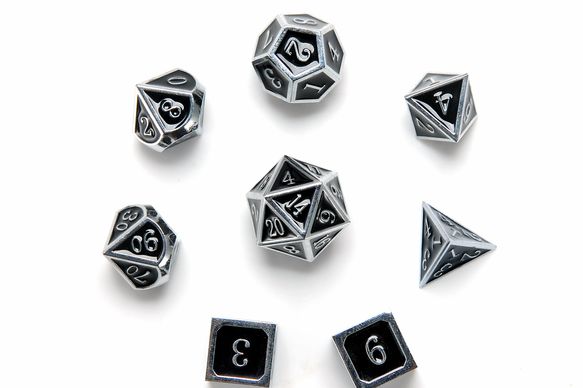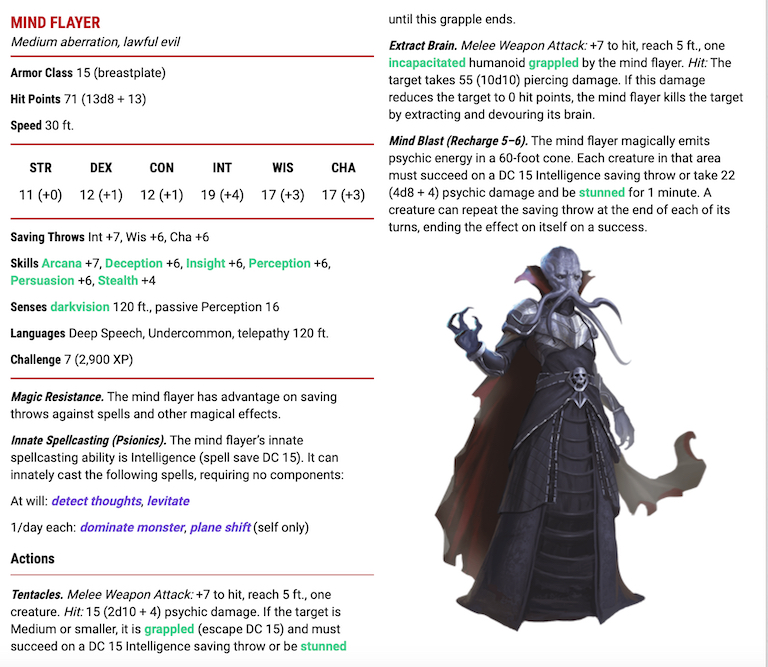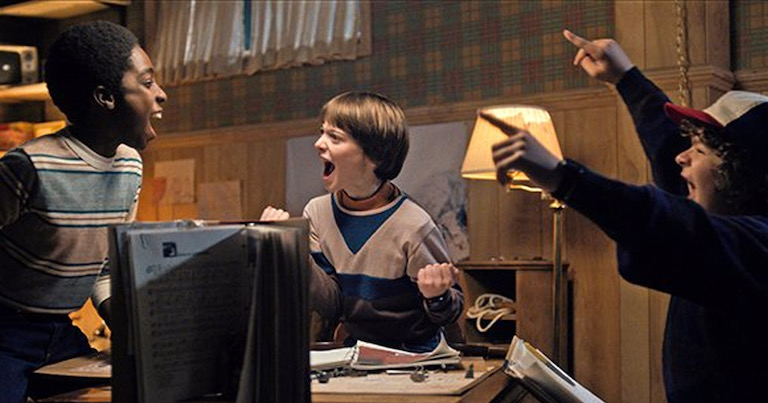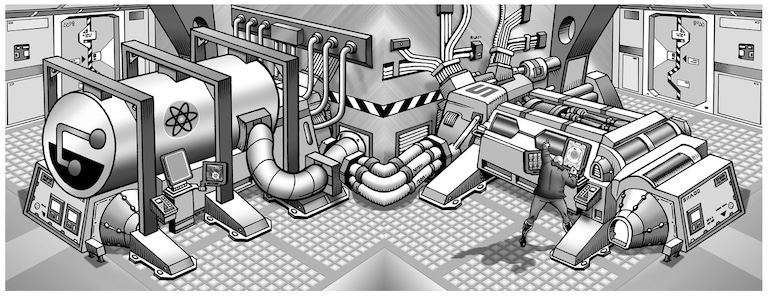Flipping the Game: Uncertain Rolls in Traveller
Traveller5 Core Rules, three volumes, 2019
Marc Miller
Far Future Enterprises
I was running a Traveller game the other night. My brother was playing in it and wanted to camouflage his characters — they had just crash landed their shuttle and fled approaching raiders — to avoid discovery. I asked him to make a roll based on his skills and characteristic. He rolled his two six-sided dice, and he did not hit the targeted number.
Tabletop role playing games — by and large — use dice rolls to add randomness to the success or failure of character actions. The dice are modified by character skills and attributes, environmental conditions, and other factors. From the perspective of the player, the results are often binary: succeed or fail — though some games introduce degrees of success or failure in a number of ways (most famously Dungeons & Dragons critical successes and failures by rolling a 20 or 1 on the twenty-sided die). Of course, many situations in real life have a level of ambiguity or uncertainty to the successor failure of actions.
As the referee for that Traveller game, I could have handled that particular situation with the camouflage in a couple of ways. I could have simply not told him the target number and narrated the scene to him as if he succeeded. Or communicated the target number and then figure out why his character failed and how he knew it.
In most games I run, I prefer the players to know the number they are trying to roll above or below. Need to pick that lock? Okay, it’s a tough one to pick with only a toothpick, so you need to roll better than 14. Some games often purposefully obscure the number. For example, in Dungeons & Dragon combat, the monster’s armor class (an abstracted number that categorizes how hard a monster or character is to hit and deal damage to) and hit points are kept hidden as they swing their battle axe or throw fireballs, and I use description to inform the players if they hit and about the declining hit points of the beast. But others are much more open — roll above 8 to hit.
Game designer Jay Little, among others, has commented on the “contract” between the game master and player when it comes to rolling dice. Essentially, they agree before the dice are rolled what the player is rolling for and the likely consequences of success or failure. Thus, when the dice land not in the player’s favor, they already know the outcome. Or if they fail, they know that as well.
Hence, why I like communicating, generally, the roll that the player must make openly. And let’s face it, experienced players know broadly what numbers they are trying to hit. They are engaged in metagaming — using knowledge that the character the player is controlling would not know otherwise. For the most part, I do not mind most metagaming, though I do clamp down when I see abuses. Part of the fun of role-playing games is engaging with a setting and universe the we enjoy. When a game master throws a Mind Flayer at a party in Dungeons & Dragons, a few of those players have probably encountered one before even though their characters have not. The game master may see the looks cross their eyes as they get a bit scared because their party’s level is low enough for it to be a truly dangerous opponent. They may even recall the armor class and its special abilities. They are engaged, and they cannot help but use some of that knowledge, even unconsciously.
Dungeons and Dragons, 5E, Mind Flayer entry in the Monster Manual
Other games will use opposed checks, which can be used to keep the results uncertain. For example, in The Witcher tabletop RPG, if a player wanted to disguise herself, the attempt’s success is determined by her rolling one ten-sided dice and adding her Craft attribute plus Disguise skill modifiers. If her roll plus modifiers results in a 15, then any NPC using his or her Intelligence attribute plus Deduction skill with a die roll needs to roll 16 or better to determine if the character is disguised. These rolls often happen in secret. However, I usually like to roll those in public so that the players can see that I’m not fudging or manipulating the dice. If the rolls are kept secret, then the game master can weave whatever is necessary, only revealing later the actual results of the roll. If the rolls are in the open, then these are no different than any other roll in its result.
I have read dozens of articles discussing how best to deal with metagaming, perception or awareness checks, and other activities that often seem to come up in games. The classic challenge for many game masters has been dealing with perception or awareness checks. When they ask players for one, they may be signaling that something is there to be found. Removing a bit of the immersion in the game. The most common responses are not worrying about that, asking for perception checks every so often regardless if anything is there to be found (my preference), or asking the players to pre-roll a set number of perception checks that the game master references at the appropriate times.
The thing is, I like it when the players get to roll at the time they need it. I often have the players roll for friendly NPCs so that they feel the randomness is in their control just so they can get rolls in.
Die rolling leads to triumphant or catastrophic moments. From Stranger Things
Back to this camouflage attempt my brother made. If the game master wants to help immerse the players in the setting, the reality is that many actions for the players are uncertain. How is your disguise? Will it fool that guard? The passport you forged — will the border police recognize it as fake? In these and many other instances, the success or failure of the action is uncertain. When the player rolls the dice and depending on how the game master operates the session, the player may know clearly that they succeeded for failed despite the uncertain circumstances.
Shortly after the session, I was perusing my copy of Traveller5, the latest rule set from the original creator of Traveller, Marc Miller. Traveller5 has rules for Uncertain checks. These types of checks also existed in Traveller: The New Era and Traveller, Fourth Edition. Outside of these and games like Twilight: 2000 (version 2.2) and Dark Conspiracy that used GDW’s house system, I haven’t yet seen similar rules in other games, though I imagine such exist.
Traveller5 follows Traveller, Fourth Edition, in modifying the classic two six-sided dice mechanic of the classic and MegaTraveller versions (that same classic style that Mongoose uses in its versions). Those versions switched to a roll under dice roll. In most versions of Traveller, the player is asked to roll above a target number with two dice — usually a 7 or 8. The players look at their characteristic modifier (like Dungeons & Dragons, the number of the Strength, Intelligence, etc., and other physical and mental attributes are translated into a modifier; in Traveller, a 10 in Intelligence equals a +1 to any die roll using Intelligence), add in any skill level bonuses, roll the dice, and hope to get a number plus those modifiers above 7 or 8.
Traveller5’s dice mechanic, however, operates a bit differently because of the roll under mechanic. Let’s say Sam wants to search the repair a jump drive disabled by an out-of-control AI. Sam’s Engineer (Jump Drive) skill is 1 and his Intelligence characteristic is 8. Add those two together, 9, and that is the target number Sam’s player must roll under to achieve success. The difficulty of the task determines how many dice the player rolls. Average difficulty is two dice — thus, Sam’s player must roll 9 or less on two six-sided dice. Pretty good odds — 83% likely according to the dice tables included in Traveller5.
But what if the AI is aware of Sam’s efforts and has sent a squad of minion robots to stop Sam’s efforts? Sam’s player decides he wants to do this search really fast, something called Extra Hasty in Traveller5. This adds two dice to the difficulty — making it Formidable. Sam’s player is now trying to roll 9 or under on four six-sided dice — now only a 10% chance. If only Sam had spent more time in his career before adventuring to gain a couple of additional skill levels….
For Uncertain checks, one of those dice is held back and rolled in secret by the game master. My brother’s character, Asher, has an Intelligence of 9 and a Survival skill of 2. To build the camouflage effectively, he needs to roll under 11. He’s pretty good at this, but he still has a level of uncertainty in knowing if his camouflage will hide him from the raiders. My brother rolls one six-sided die. On any roll of 1-5, he knows for certain that he succeeded. Narratively this can be described as he feels a level of confidence in his work from his extensive military career before becoming a pirate or one of the NPCs says she can’t see Asher. However, if that die turns up a 6, the possibility of failure is real. I, the game master, roll my die — in secret and note the result. Asher can feel pretty confident he succeeded — which means my brother can feel pretty confident. But… but what if the game master rolled a 6. That would have been a failure.
Less skilled characters or more difficult tasks make uncertain tasks more so. If Asher’s Survival skill had only been a 1 and his Intelligence an 8, then 9 is the number that must be rolled under. When my brother rolls that first die, only 1-3 ensures certainty. He knows that if he rolled a 4, then the game master must roll 1-5 for him to succeed. Still decent odds. If my brother’s roll was a 6, then the game master’s roll must be 1-3 for him to succeed. 50-50.
I like this check because of the seed it implants into the mind of the player. While the dice rolling in RPGs takes the player back from immersion in the scene, this check flips the metagaming on its head. It uses metagaming as an immersion tactic. My brother is looking at the dice and debating in his head if his character succeeded or not and basing decisions on that. Does he abandon the camouflage attempt? Does he stick with it and hope it was good enough to thwart the raiders?
Some games would rely on an NPC’s roll to determine the level of success, but I tend to not do that as much as possible. I want the fate of the characters in the player’s hands and die rolls as much as possible. They did not show up to watch me roll a bunch of dice. Thus, the one thing I do not like about the check is that it removes that die roll from my player’s hands. Unless I can devise some way for them to roll a secret die that only I see, the player’s fate may depend on a game master’s roll that isn’t an NPC trying to actively stop the player. Hence, I think the check needs to be judiciously used — many tasks are uncertain — but not every one needs this die roll.
For the most part, the players roll all their dice, and we don’t worry about the uncertainty. Actions that the player wants to take that have more potential consequences — disguising themselves, attempting to hack into a super secure computer, forging documents, bluffing their way past alert guards. These kinds of tasks where the NPC reactions can be subtle alarms are excellent fodder for the uncertain roll. Did Sam break into the AI’s central core unit without tripping the warning systems. Seems like an Uncertain roll to me.
The check helps to ensure that some metagaming is tool for immersion while offering opportunities to heighten the drama. I like this particular check enough to try to find ways to inject it into my other games as a house rule where I can — and that seems fair to the players. For Traveller, well, I already have the mechanism to do that. Players forewarned.
Patrick Kanouse encountered Traveller and Star Frontiers in the early 1980s, which he then subjected his brother to many games of. Outside of RPGs, he is a fiction writer, avid tabletop roleplaying game master, and new convert to war gaming. His last post for Black Gate was Altered Initiative in the Altered Carbon RPG. You can check out his ongoing, play-by-post, referee-less Traveller game at basiliskstation.blogspot.com. Twitter: @patrickkanouse. Facebook: facebook.com/patrickkanouse









The mechanic of Uncertain rolls sounds very, very clever, coupled with the idea of the challenge level being the number of dice rolled.
As for “open” Uncertain rolls, I think you could manage it if the players use different colored dice. Add one additional die to be rolled and the referee chooses the color of a die whose value is not counted. The player thus can be sure of a range of values, but not which value they are “carrying”.
I also appreciate the notion that the game is not about the referee rolling dice, which is why I do like the Powered by the Apocalypse (PbtA) system from Vincent Baker’s Apocalypse World game. There, there is no referee/NPC rolling. So, PCs getting shot is them failing to Act Under Fire, or choosing to Suck It Up to do something instead of dodging the bullets, like defusing a time bomb.
Yeah, I’ve become pretty enamored with this mechanic. I do like your suggestion on the open rolls. I’ll have to test that out. My brother and I are starting up a Twilight: 2000 campaign with the v2.2 rules. The uncertain mechanic works a tad differently there, but same principle. And I think the two dice option might work for that.